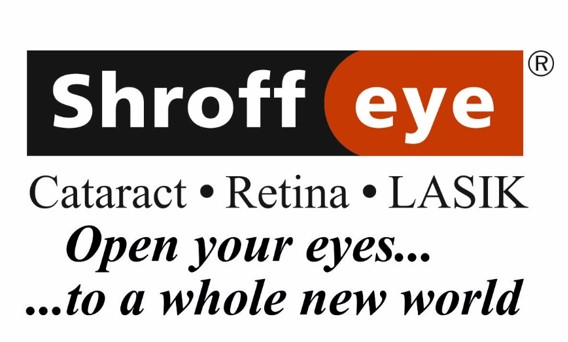Shroff Eye Hospital is India's First Eye Hospital accredited by the Joint Commission International (USA) since 2006. Shroff Eye is also India's first and only Wavelight Concerto 500 Hz LASIK center. Shroff Eye has stood for excellence in eye care since 1919. A firm commitment to quality is at the heart of all services provided at our centers at Bandra(W) and Marine Drive, Mumbai.
Sunglasses have become a mandatory accessory in every fashionable closet since their initial burst into popularity in the 1940s. But what do these sunglasses actually do for your eyes? Read on to know more about sunglasses and the benefits of wearing them.
UV Rays and Your Eyes
The ultraviolet rays that threaten your skin with burns, and even cancer, aren’t particularly kind on your eyes either. Extended exposure to UV rays, from staying too long in direct sunlight, could lead to a host of eye problems, like macular degeneration and cataracts. Clearly, eye protection from the sun is necessary; but do sunglasses really provide 100% protection from UV rays? Not all of them do. You must check with your optician about the level of protection that your sunglasses provides, and choose a pair that blocks 100% UV rays, giving your eyes the best protection from the sun.
UV radiation can be categorised into three sets of invisible rays: UVC rays, which are the most dangerous, but so far virtually blocked by the atmospheric ozone layer; UVB rays, which can cause dangers ranging from a simple skin tan to even skin cancer; and UVA rays, which have been linked to the formation of certain types of cataracts. The dangers of ultraviolet rays and the eye damage they can cause are well documented. This highlights the necessity of a pair of good UV-blocking sunglasses.
Children’s sunglasses are an important yet relatively neglected aspect of eye protection. Children spend far more time outdoors in the direct sunlight than adults, meaning that their exposure to UV light is correspondingly greater. It is advisable to invest in a pair of children’s sunglasses for one’s kids. These often come with innovations like rubber frames to minimise the chance of breakage.
Polarized Sunglasses
Polarized sunglasses are meant to reduce the glare from highly reflective surfaces like water, glass, or snow. Without polarized sunglasses, looking directly at such a reflective surface will cause immediate discomfort to the person, not to mention considerable harm to the eyes. Polarized sunglasses can deal with these reflective glare conditions because of their vertical polarizing orientation. At any angle other than horizontal, polarized sunglasses will filter out some or the entire glare, so that the viewer is saved from potential eye strain due to the reflective surroundings.
Polarized glasses are used mainly in situations where it is necessary to filter out glare, such as in many outdoor activities like sports or fishing. Regular sunglasses, non-polarized, can also filter out glare. However, regular sunglasses will cause loss of visibility in subtle details, which may not be desirable. Normal sunglasses reduce the intensity of light equally everywhere; polarized glasses work by selectively eliminating the reflection from light that causes dangerous glare conditions.
Photochromatic Lenses
Photochromatic, or photochromic glasses have lenses which change between dark and light depending on how much ultraviolet light they are exposed to. The convenience lies in the fact that they can be worn both indoors and outdoors. Indoors, photochromatic glasses serve simply as regular prescription spectacles, while outdoors they darken to serve as sunglasses. Indoors, as one is shielded from the UV rays present in direct sunlight, the photochromic lenses are transparent. As one goes outdoors, exposed to UV rays, the lenses darken. Both ways, the transition is rapid.
However, one must remember that the transition takes place because of a change in UV light, not in visible light. This is visible best with the example of a car. If a person wearing photochromatic lenses were to sit in the driver’s seat in full daylight, the lenses would still not darken. This is because the windshield already blocks most of the UV rays; since there is a lot of visible light, but little UV light, the photochromic lenses will not darken.
Prescription Sunglasses
People who require corrective prescription eyewear, like spectacles or contact lenses, might have faced a few problems about their choice of sunglasses. Since regular sunglasses are meant for people with 20/20 vision, for someone who needs corrective eye wear, using these sunglasses will mean a compromise with good visibility. However, not using any sun protection at all is also a bad option, given the dangers of UV rays exposure.
Prescription sunglasses may then come in handy for those who wish to retain the same clarity of vision in the sun, which they enjoy indoors with their glasses or contact lenses on. Prescription sunglasses are available for many different lens prescriptions, including bifocal and progressive lens sunglasses. Polarized prescription sunglasses are also available, to reduce the glare from reflective surfaces like water, glass or snow.
Dangers of Cheap Sunglasses
Beware of a price tag on sunglasses that looks unbelievably cheap! If it sounds too good to be true, it probably isn’t. Cheap sunglasses that lack a UV filter are in fact more dangerous to the eyes than not wearing sunglasses at all, since they cause the pupils to dilate, which invites more rays into the eyes. Before using a pair of sunglasses, always check with your optician about the level of UV protection it offers.






